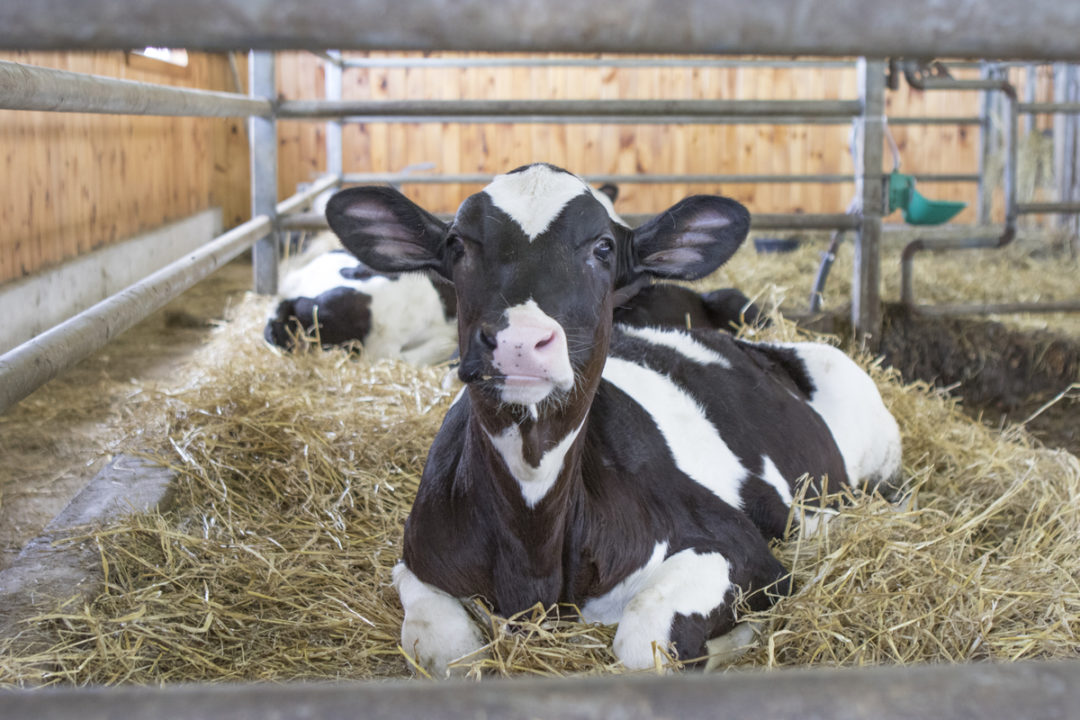Selling things is easy if you have what people want. It is no different for excess heifers. If you overshot your target number of replacement heifers, marketing extra heifers at a premium is pending value relativity. How well do they fit the bill for today’s buyers?
While cattle prices do fluctuate, as does everything else, prices always have a bell-shaped curve. You can reach for the upside of market prices with a profitable genetics focus in your breeding program. Environment and genetics predict performance. Buyers will adjust value to the heifers' performance potential in their herd.
For most progressive dairy operations buying replacements, valuable genetic traits prioritize high-impact, income-earning traits – traits with high heritability that will earn money. These should be balanced with expense-reduction traits, such as health and longevity. A top-production cow will not make money when she is stuck in the hospital pen or exits the herd before paying back rearing costs. Genomic testing and service sires in your heifer breeding program also dictate marketability.
Income-earning traits
Invest in genetics with the most valuable milk composition for your milk market. Do most people eat or drink their dairy products? Do you anticipate that changing in the next 10-15 years? Given freight costs in 2023, your cattle will often be most valuable if they stay in your milk market.
In most U.S. markets, solids are king. Sire selection for fat or protein yield influences projected earning potential in the next generation. Production traits are published as predicted transmitting abilities (PTAs). PTAs calculate the estimated amount of progress for a sire’s daughters relative to the breed average. Due to a reset every few years using a base birth year, the breed average is always zero.
Yield trait values, such as PTA protein (PTAP), are expressed in pounds. For example, a sire with +70 PTAP is expected to have daughters who produce 30 pounds more per mature lactation than a sire with +40 PTAP.
Expense-saving traits
Everyone loves a money-saving hack. The fewer times you handle a cow, the greater the savings on labor and treatments. Genetically creating problem-free cows with resistance to illness is valuable for any dairy operation. Especially consider incorporating traits for udder health and reproductive soundness.
Buyers appreciate traits affecting longevity. Cattle will take at least the first lactation, and likely a portion of the second lactation, to pay back the purchase price and become cash flow positive for their new owners. The longer cows stay productive in the herd, the greater the return on investment.
Genetics also impact feed efficiency. The PTA for feed saved (FSAV) identifies cows with lower feed intake needs for maintenance. FSAV is the pounds of feed saved per lactation above the breed average. The higher the value, the more genetic potential for feed efficiency.
Functional type matters
You do not need to be a show cow enthusiast. However, functional type does contribute to longevity and productivity. Therefore, functional type equals more valuable heifers.
When potential buyers are evaluating your heifers, in addition to body condition and wellness checks, they are inspecting soundness. Mobility is critical for cattle to move from resting to feed to parlor. Smart buyers do not let genetics with bad feet and legs enter their breeding program. This is one of the first discard points buyers will use when inspecting cattle. If they can’t walk, they don’t get on the truck.
Additionally, if you continue to have excess heifers, you want your previously sold heifers to be the best advertisement when they freshen. Well-attached udders with correct teat placement for easy unit attachment will make your buyers repeat customers.
Show me the data
Genomic testing does not always create a premium. Read that again.
Your expensive Excel file will only increase the sale price if the heifer’s genomic PTAs are valuable to the buyer pool. Buyers who recognize the value of genetic and parentage verification could be interested in paying a premium. Usually, this premium is based on a standardized industry index, such as Lifetime Net Merit (NM$).
Most genomic-tested herds sell their lowest genetic index heifers. If you have an elite genetic herd, your low-index genetic heifers may be among the top genetics in most buyers' herds and be worthy of a premium. However, an average genetic herd selling their bottom-tier genetics needs to be realistic about heifers’ value relativity.
When genomic testing is not available, an analysis of the heifers’ sire portfolio or parent average can be used. Set strict standards for all sires being used. A cheap straw or a vague customized genetic index only showing a sire package average can be costly when milking or marketing the next generation.
Likewise, be strategic about service sires used in your heifer program if you are selling bred heifers. Sires of conception should be sound for profitability traits. Avoid breeding all heifers to beef or herd sires. Also, monitor age at first breeding for consistency and try to use primarily sexed semen in heifers.
Breed for profit and the buyers will come
If you were in need of replacements, would you be excited to buy your heifers? Compared to the breed average, is their performance potential premium-price worthy?
Your sire selection criteria for creating the next generation of herd replacements should be based on traits that are important to your own operation’s bottom line. Create cows that will produce high volume with below-average inputs, breed back and stick in the herd lactation after lactation.
A balanced, lucrative genetic portfolio for any dairy should include traits to earn money, such as production traits, as well as health and longevity traits, to reduce expenses. Frequently review service sires being used to confirm the next generation will achieve your performance goals. Profitable cattle are easily marketable.







